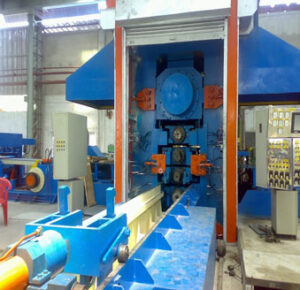The Ultimate Guide to Fiberglass Insulation: Professional Installation Insights
In the realm of residential and utility buildings, insulation plays a pivotal role in maintaining comfort and energy efficiency. In residential and utility buildings, conventional bulk insulation for walls and ceilings comes in three main types: fiberglass, cellulose, and mineral wool, each with its own set of benefits and drawbacks. Because it’s inexpensive and effective, fiberglass insulation Houston is a well-liked alternative among the several that are accessible. Let’s examine this adaptable material in more detail to learn about its advantages, disadvantages, and installation issues.
What is fiberglass insulation?
The most popular type of insulation used in homes nowadays is fiberglass. It is offered for sale in two main formats: bulk and covers (in long or rolls). The first support comes with a paper backing for placement between floor joists and wall studs, or it can be used on the ceiling without support. This configuration is mainly suitable for ceilings, although it is also possible to blow it into wall cavities.
Fiberglass insulation, invented in the 1930s, has long been the principal insulation used to insulate a home from heat loss and gain. In the winter, the insulation adds to the thermal confinement created by the boiler within. In the summer, it reduces the spread of outside heat, allowing the air conditioner to cool more effectively. Glass wool is commonly used as an interior thermal and acoustic insulation material. They are most often applied under sloped roofs, wooden floors, or interior walls. Glass wool is mainly found inside the house.
Why choose this type of insulation?
Fiberglass insulation has a low cost of effectiveness. It doesn’t shrink, either. To avoid breathing issues brought on by the fibers, the majority of producers sell the material in sealed strips that are wrapped in plastic film (perforated polyethylene or polypropylene, in particular). Fiberglass batts have a plastic coating that serves as an efficient vapor barrier.
Fiberglass insulation doesn’t catch fire. Recycled glass is used in some fiberglass insulation, lowering its environmental impact. For a typical 2 by 4 wall, the medium and high-density choices are roughly equivalent to R-11 and R-15. Also, fiberglass insulation Houston is not eaten by bugs (or rather, it isn’t nutrient-rich, so they don’t have an excuse to nibble on it).
Everything within the wall cavities is surrounded by blown fiberglass, which creates a more consistent layer of insulation. Choosing fiberglass insulation Houston also has a very good thermal coefficient, although lower than that of polyurethane and polystyrene.
What are its disadvantages?
Exploited natural resources exist in almost unlimited numbers (sand and volcanic rocks). On the other hand, their manufacturing is also very energy-intensive and generates significant emissions of polluting gases. Concerning the carcinogenic nature of these products, although the fibers of these products exceed those of asbestos, numerous researches reveal an increase in the frequency of respiratory cancers in exposed people, with rock wool being responsible for an increase in cancers. It is therefore essential to avoid breathing these fibers when using these products. Applying it without protection irritates the skin and eyes as well. Because the fiberglass insulation is tiny enough to inhale and slip into the skin, protective equipment is required when installing it. Formaldehyde is still used as a binder in certain fiberglass insulation, and this leaches into the air. Moreover, this product could cause cancer. Fiberglass insulation has to be protected from moisture with a vapor barrier unless sealed plastic batts are utilized. Airtight panels also need to be used to cover coated surfaces. As they deteriorate, fibers are released into the atmosphere. Ultimately, glass fibers are typically not recyclable.
Consideration of fiberglass insulation Houston for your house requires serious consideration of the benefits and drawbacks. Although fiberglass insulation is inexpensive, efficient, and non-flammable, it also comes with drawbacks, such as possible health risks, environmental issues, and the requirement for correct installation.
It is advisable to hire specialists to install fiberglass insulation Houston due to its intricacy and possible health hazards. The installation specialists have the expertise to guarantee enhanced insulation performance, fewer health concerns, and better maintenance. They may also offer advice on selecting the appropriate thickness and kind of fiberglass insulation for your particular requirements.
In addition to safeguarding your health, commissioning fiberglass insulation Houston will make sure the insulation works effectively and lasts a longer time. Professionals can provide you with peace of mind and the best insulation performance for your house by handling any issues or problems that may come up throughout the installation process thanks to their knowledge and experience.





